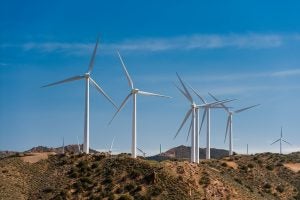 The Los Angeles City Council recently passed a unanimous resolution requiring Los Angeles Department of Water and Power – the largest municipally-owned utility in the country — to study how the city can achieve a 100% clean energy future. With help from research partners, including academic institutions, the U.S. Department of Energy, and environmental and consumer groups, the study has the potential to become a foundational roadmap for running the utility on only clean and renewable energy.
The Los Angeles City Council recently passed a unanimous resolution requiring Los Angeles Department of Water and Power – the largest municipally-owned utility in the country — to study how the city can achieve a 100% clean energy future. With help from research partners, including academic institutions, the U.S. Department of Energy, and environmental and consumer groups, the study has the potential to become a foundational roadmap for running the utility on only clean and renewable energy.
California currently has a goal to reduce greenhouse gas emissions 40% below 1990 levels by 2030, with half of the state’s energy supply powered by renewable electricity by 2030. To achieve these targets, it is imperative for the state to look seriously at how to get off of fossil fuel dependency for our energy needs. Utilities and cities can be the key to reaching those climate goals. Read More











